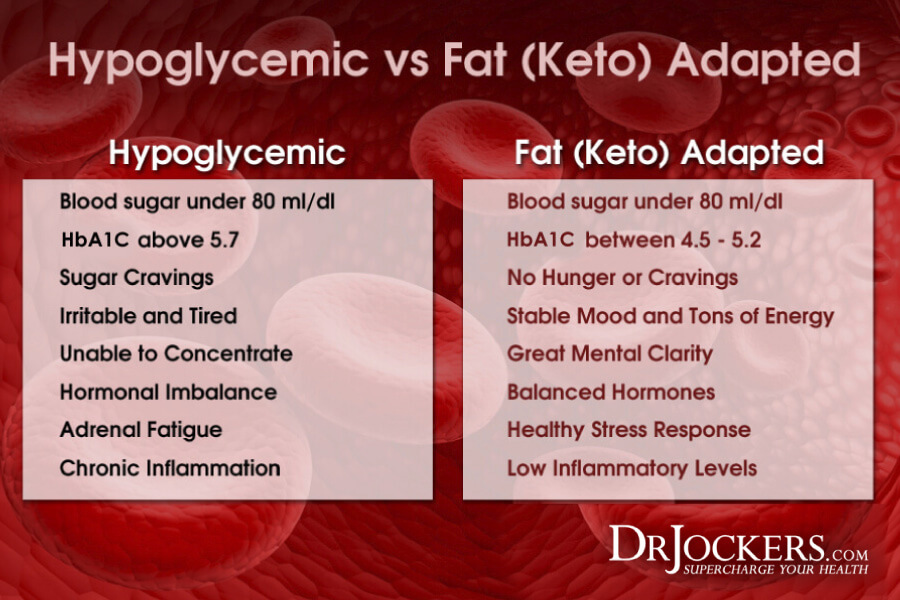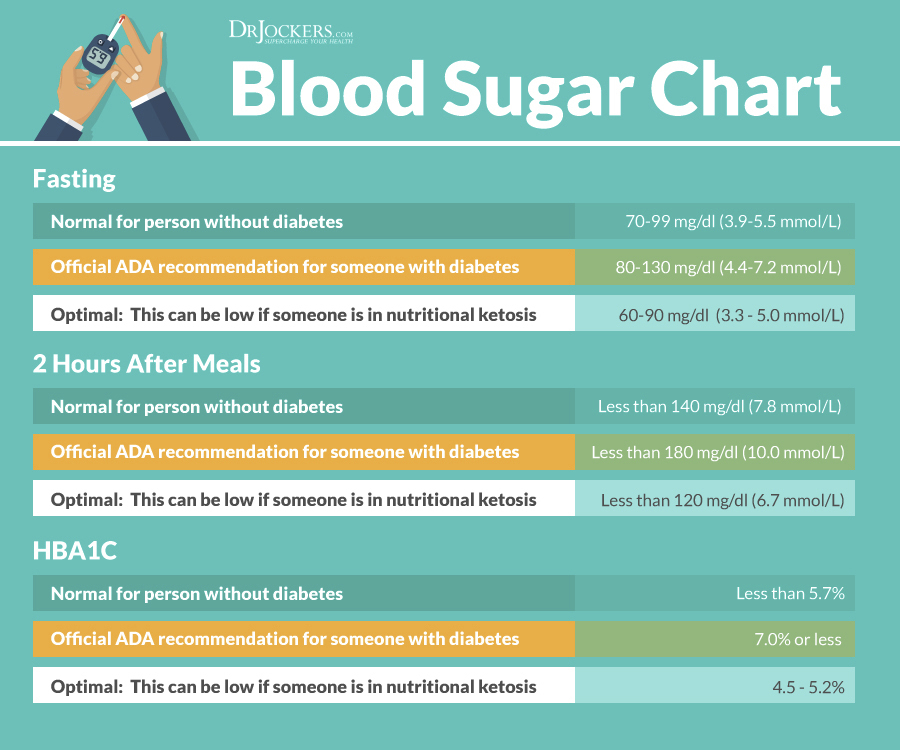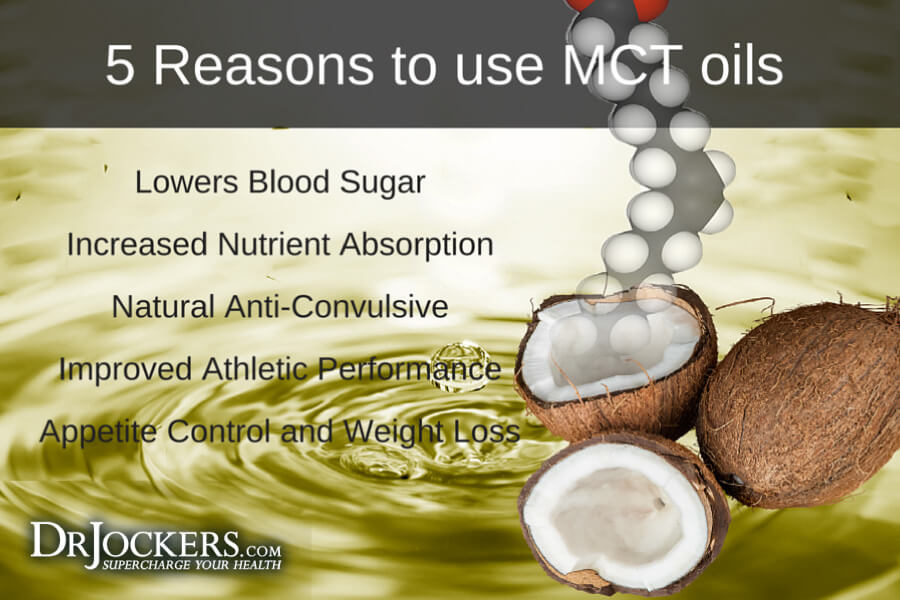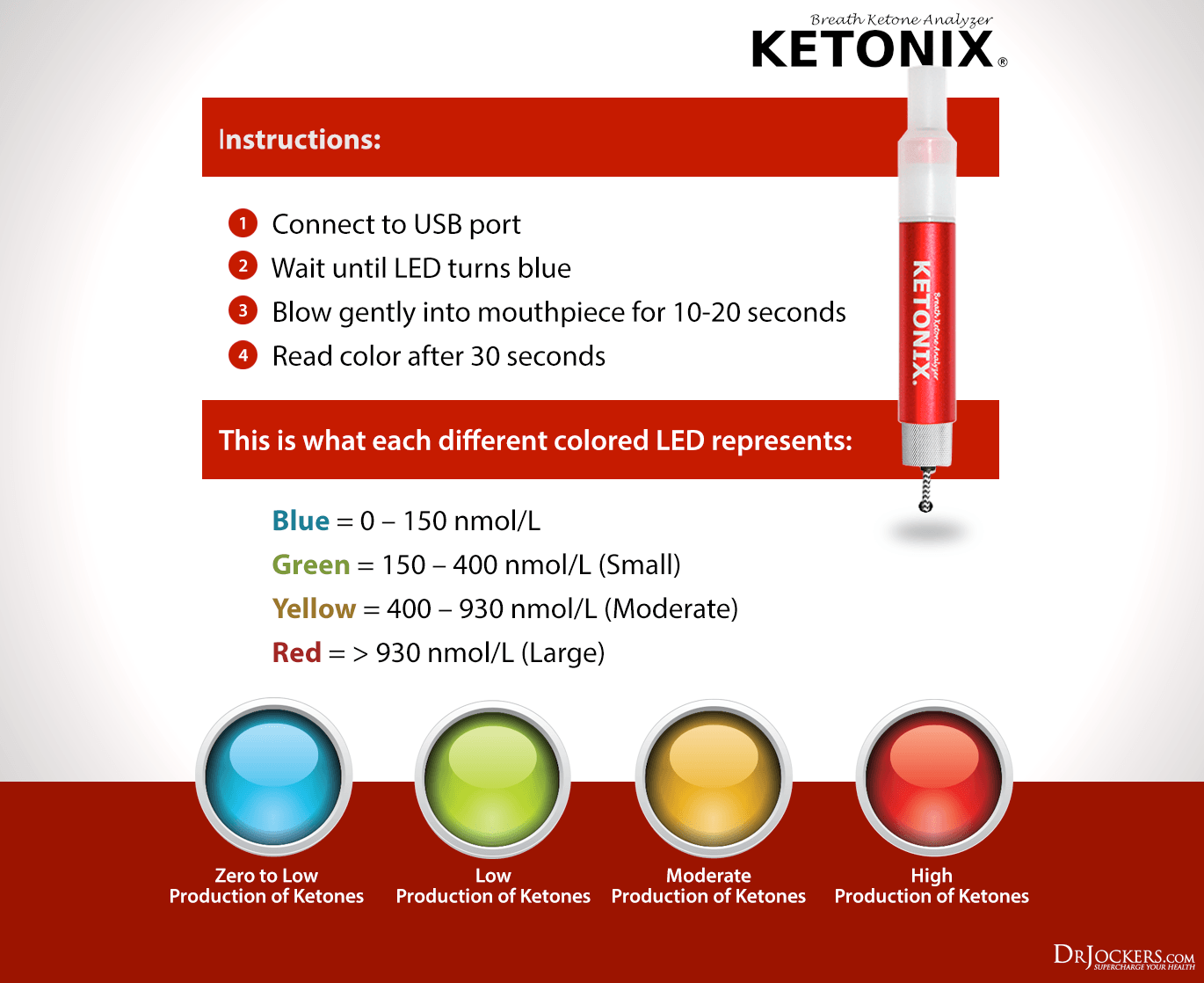5 Ways to Measure Ketones In Your Body
A ketogenic diet is a very low carbohydrate, moderate protein and high fat based nutrition plan. A ketogenic diet trains the individual’s metabolism to run off of fatty acids or ketone bodies. This is called fat adapted, when the body has adapted to run off of fatty acids/ketones at rest. It is important to measure ketones to ensure you are truly experiencing the benfits of ketosis.
Research has demonstrated that this nutrition plan improves insulin sensitivity and reduces inflammation throughout the body. This leads to greater fat metabolism and muscle development as well as a reduced risk of chronic disease. (1, 2).
I get asked all the time how to measure ketones in the body. There are several major ways to measure ketones and we will discuss those in this article.

Measuring Your Ketones
There are three types of ketone bodies: Acetone, Acetoacetate and Beta-Hydroxybutryate (BHB). Each of these three can be tested as acetone is a ketone released through the breath, acetoacetate is a ketone released through urine and BHB is (although not technically a ketone it acts like a ketone) in the blood stream and used by the cells for energy. This is how you go about testing and ways to measure ketones in the body.
1. Blood Ketone Meter
This measures BHB and is considered to be the most accurate way to measure ketones. These have the ability to determine the ketone level in your blood precisely but they are also pricey and invasive. Personally, I freak out every time I have to prick my finger!!
The Precision Xtra blood glucose and ketone meter is the most common meter used and you can get it for about $30. The expensive part is the ketone test strips here which can cost $4 each. If you are looking at testing yourself every day it is going to cost you $120 a month and the $30 meter. Here is a starter kit you can get on Amazon
I would personally recommend the Keto Mojo which is a newer company and is very effective and really well priced at $50 for the meter and the lowest rates you can find online for ketone strips (99 cents per strip) and blood glucose strips (30 cents per strip). After the initial cost of the meter, the cost of testing yourself 1 time each day would only be $30 and $60 to test 2 times per day!! Much better overall value.
Most people will enter into a light nutritional ketosis (between 0.5-1.0 mmol/L on the meter) within two or three days. It typically takes two to three weeks to get into a stable and optimal ketosis of 1.5-3.0 mmol/L (3).
2. Breath Testing To Measure Ketones
A non-invasive and cheaper alternative is to measure ketones through the acetone levels in the breath. This measurement technique has been shown in the literature to be an accurate way to test for nutritional ketosis (4).
The Ketonix Acetone Breathalyzer is an easy and relatively inexpensive way to test your breath ketone levels. One thing to remember is that breath ketones are not always a pure reflection of blood ketones because they can be affected by several factors including alcohol consumption and water intake.
I like this test the best to measure ketones because it is a one time expense $199 here but no additional costs. You can test yourself at any time and you don’t have to draw blood in order to get a reading! I hate needles and blood pricks!!
When you blow into the ketonix mouth piece the LED light goes off with a unique color based on the level of ketones you have produced. The device is the size of a large marker and it has the USB cord attached at the base. The cord is about 3 feet in length which allows you to stretch it for testing.
Set-up is easy. You download a small program to your computer, create a profile and plug the Ketonix into a USB port. After a few minutes of initializing, click “start,” and then blow (exhale) into the unit.
Here are the official instructions on the label affixed to the device:
- Connect to USB port
- Wait until LED turns blue
- Blow gently into mouthpiece for 10-20 seconds
- Read color after 30 seconds
This is what each different colored LED represents:
Blue = 0 – 150 nmol/L
Green = 150 – 400 nmol/L (Small)
Yellow = 400 – 930 nmol/L (Moderate)
Red = > 930 nmol/L (Large)
Both the yellow and red range are considered to correlate with nutritional ketosis.
3. Urine Testing to Measure Ketones
The most common way people measure ketones is through the urine (acetoacetate) with simple ketone strips. Unfortunately, these are not as accurate and are not considered a reliable analysis of blood ketone levels.
This is the most commonly used method because it is cheap and easy. It only costs $9 for 150 strips here so that is $1.80 per month if you were to test them 1 time per day and $3.60 per month if you test 2 times per day which would be better.
One of the reasons they are inaccurate is that the body will naturally excrete more ketones before they are keto or fat adapted than after they adapt. So if you begin on a ketogenic diet, it is natural to see high levels of urinary ketones. Once you are keto-adapted, this should drop to small to moderate levels as the cells are more responsive to the ketone levels. If your levels stay elevated it means your cells are not utilizing ketones effectively.
Changes in hydration will also effect the concentration of ketones. If you are super hydrating your system the way that I teach you too, you will dilute your ketone concentration in the urine. Very high ketone readings are often indicative of a dehydrated state.
Other changes can be seen during fasting states, eating periods, exercising and after waking up.
4. Testing Blood Glucose Levels
This is not commonly used but it is less expensive than testing blood ketone levels. You can use the Precision Xtra blood glucose and ketone meter here if you already have it and blood glucose strips here which are basically $1.00 per strip.
I would again recommend the Keto Mojo instead, which is a newer company that is very effective and has the lowest rates you can find online for ketone strips (99 cents per strip) and blood glucose strips (30 cents per strip).
When we are in primarily sugar adaption our body is very sensitive to low blood sugar levels (hypoglycemia) and will secrete stress hormones to boost blood sugar back up if it gets too low. Typically the key range for this is around 75-80 mg/dl even though hypoglycemia is technically diagnosed by a fasting blood sugar less than 70 mg/dl (5).
When the blood sugar levels drop below 80 mg/dl the body responds by kicking out some cortisol which tells the body to break the glycogen (stored sugar) in the muscle and liver in order to get more sugar into the bloodstream. This is a natural survival response as the body is concerned that sugar (its primary fuel) is scarce and the individual is in a famine period.
When the body kicks up these stress hormones there is typically a natural high at first, but if this becomes repetitive the individual can go into a state of adrenal fatigue where they are unable to get cortisol and blood sugar levels up high enough.
The end result of this pattern is blood sugar imbalances where the individual is craving sugars and sweets, they deal with fatigue and mental lethargy and often have sleep and mood disturbances. These are all classic signs of adrenal fatigue and hypoglycemia.
When one is in a ketogenic or fat adapted state, they can be at a hypoglycemic level (under 70mg/dl) and feel very good. They will have lots of energy, mental clarity and stamina, healthy mood and behavior and be able to sleep well.
This is a sign their body has adapted to using ketones and is not reliant on sugar as its primary fuel source so the body is no longer concerned with keeping blood sugar levels up in order to survive.
I instruct my clients, that if their blood sugar is between 50-75 mg/dl and they feel very good, mentally sharp, energetic and relaxed on a continual basis, then they are keto-adapted.
A HbA1C test looks at the level of glycation (indicative of blood sugar levels) in the red blood cell over a 90-120 day period. The typical HbA1C on a ketogenic diet is 4.5-5.2%. If you get your HbA1C tested and it is above this range it is an indication that you have not been in ketosis for a good period of time through the 90-120 day period.

5) Check How You Feel
The last way to measure ketones is subjective, but important none the less. When you are in ketosis, you should feel relaxed and mentally sharp. You have energy throughout the entire day, don’t have cravings and hardly think about food.
A common sign you are in sugar burning mode, is that you feel fatigued throughout the day. You have cravings and are wanting to snack throughout the day. If you notice this going on, you are not in ketosis.
Another thing you may notice in ketosis is the smell of acetone. It is a “fruity” kind of smell. You may sense this in your breath, in your sweat or urine. This is natural when you are in ketosis but it should be faint.
If you are smelling really bad and having dry mouth, it is a sign you are electrolyte deficient. Drink more water and pick up your sodium and potassium levels. Most of the time having an avocado or fresh lemon each day with extra pink salt or a seaweed spice mix on your foods will help to relieve this. Staying well hydrated, drinking peppermint tea and brushing your teeth often can help reduce the fruity smell as well.
See the Big Picture
I have been in and out of nutritional ketosis for almost 4 years now and I know what I need to do in order to get and stay in ketosis or cycle out of it. It is a good idea to test yourself with one of the above methods (I personally like the ketonix the best) to see how your body responds to different things you are consuming.
These days, my net carb intake (total carbohydrates – fiber) is typically around 30-60 grams depending upon how much exercise and activity I have. I am typically in ketosis for 2-3 days and then cycle out and go back in through intermittent fasting with MCT oil the next day. Sometimes I test and measure ketones if I am trying to achieve certain goals but I am not dogmatic about it.

Extra Keto Adaptation Tips
Typically you will notice daily fluctuations in ketone formation based on hormone levels. This is more common in women, but both sexes will experience this.
Ketones are typically lower in the morning and higher in the evening depending upon what you ate that day. This is because your basal metabolic rate is lower upon arising than it is after you have been up and active for a period of time.
The deeper into a ketogenic fast with MCT oil the more ketones can be produced. If you do intermittent fasting and eat one to two meals per day in a 4-6 hour eating window and use MCT oil in coffee and teas during the fasting period you can peak your ketones around 16-20 hours into the fast.
Regular exercise can help you get into ketosis faster as you deplete your glycogen reserves. But be careful not to overtrain. Too much training can cause adrenal fatigue and a blood sugar instability can occur as a result.











A few grammar corrections:
I instruct my clients, that if there (<—their) blood sugar is between 50-75 mg/dl and they feel very good, mentally sharp, energetic and relaxed on a continual basis, than(<—then) they are keto-adapted.
A few thank you’s (<-here).
Thank YOU (<-here)
and one more…THANKS!!!! (<-here).
Started the Keto life 3 months ago, I'm still learning but what I just read answered so many questions.
Dr. J, I have so much more energy. I suffer from a LONG list of ailments, sleep has always been hard, harder still getting up before 10:am. My average night would be going to sleep around 4 or 5 AM and getting up a 10AM or 11:AM this was my life for years. I forgot what it was like to get up at the crack of dawn.
Since Keto I have the energy to get up early and I love it. So much more i want to write but that it for now. Thanks again.
Wow that’s great Chato!
Thanks for the info! How would the keto diet work for someone training for a marathon? I plan on starting training later this year.
It can work really well! Test it out while in training and see how you feel
You maintain that in a keto-adapted state a blood sugar reading under 80 (while feeling fine) is indicative of the keto adaption. Would this 80 be after a fast as would indicate a state of hypoglycemia or will a keto-adapted person constantly maintain this blood sugar level? Just want to know as much as I can and thank you!
A keto adapted person will typically have a blood sugar between 50-100 and there fasting blood glucose will be around 50-80. Hope that helps!
interesting list, just to complete I would add the GKI (Glucose Ketone Index) that is the rapport between glucose and ketone (BHB) and is calculated as Glucose/18,016/Ketones, the result are positive for ketosis under 3 becoming intense under 1
Yes we need to add this to our list. You are correct and look out for a future article on this.
Awesome information!
Question on the A1c. As a, previous to keto, insulin dependant diabetic who no longer takes insulin (ty keto!). I can’t get my sugars below 109, starts high in the morning and drops through the day (before keto my fasting sugars were 200-300). Based on this article I can’t get into true ketosis but I follow a strict keto diet and never go above 20 carbs. I exercise daily. Is there something you have found that works to help diabetics break the 100 bg barrier?
Vitamins you are taking can also affect the urine strips. I take the Natures Plus Ultra Source of Life Whole Life. It makes your urine very yellow. I notice when I am traveling, I will sometimes forget to bring them and my stips will show moderate/40. But as soon as I get home and get back on vitamins, it is back to Neg.
I am in Ketosis but don’t have abundant energy. What am I doing wrong? I have been following this WOE since the end of December 2017 and have lost weight.
Hey Christina, sorry to hear about this! There could be a number of reasons why this is so. First, check out this article: https://drjockers.com/10-biggest-ketogenic-diet-mistakes/
It could be stress, not consuming enough calories, poor sleep, food sensitivities, thyroid issues, etc.
If you are looking for some guidance to help you troubleshoot these issues on a coaching plan, get in touch with michael@drjockers.com
The keto diet works with ll diabetes?
https://drjockers.com/ketogenic-diet-safe-diabetics/ 🙂
I use the urine strip. Appreciate your including a picture of it; it would be helpful to me if you say where on that strip one should try to get to. I tend to hover between negative and 5. Once I reached 15 and felt pretty awful.
Also, I’ve never gotten to the point of feeling better, more energy, etc.
Hey Jo, You may get a better idea of if your body is in ketosis or not by using a blood or breath ketone monitor instead!